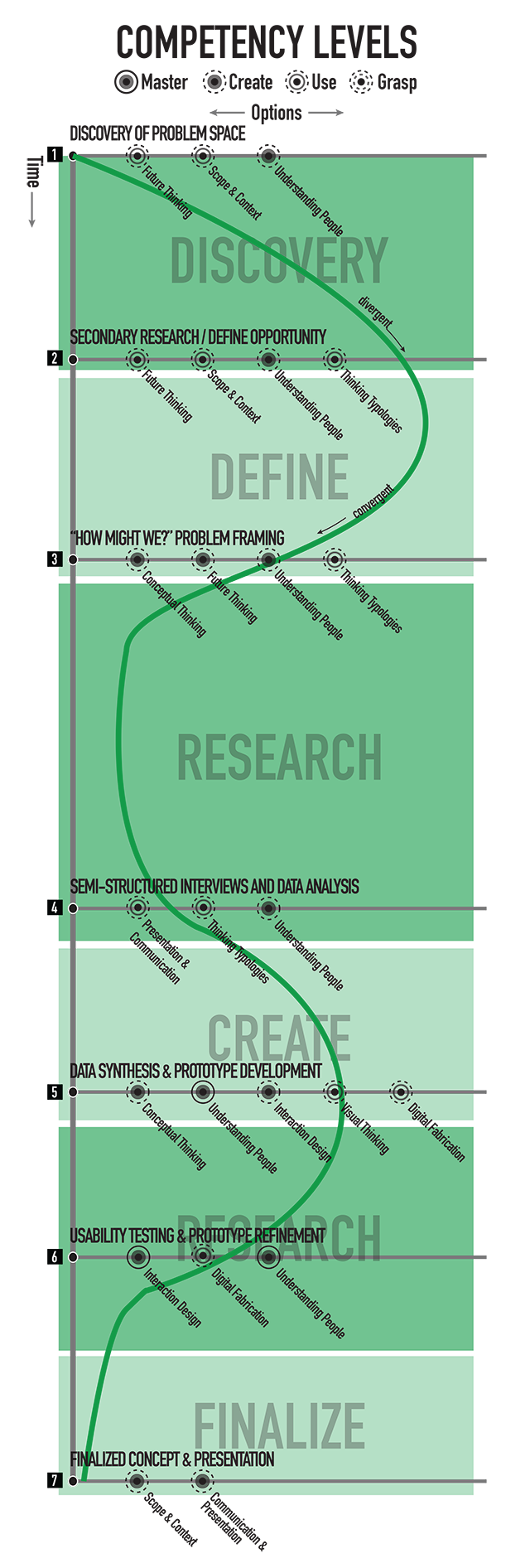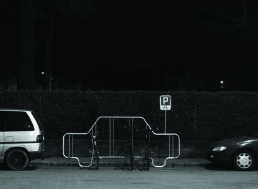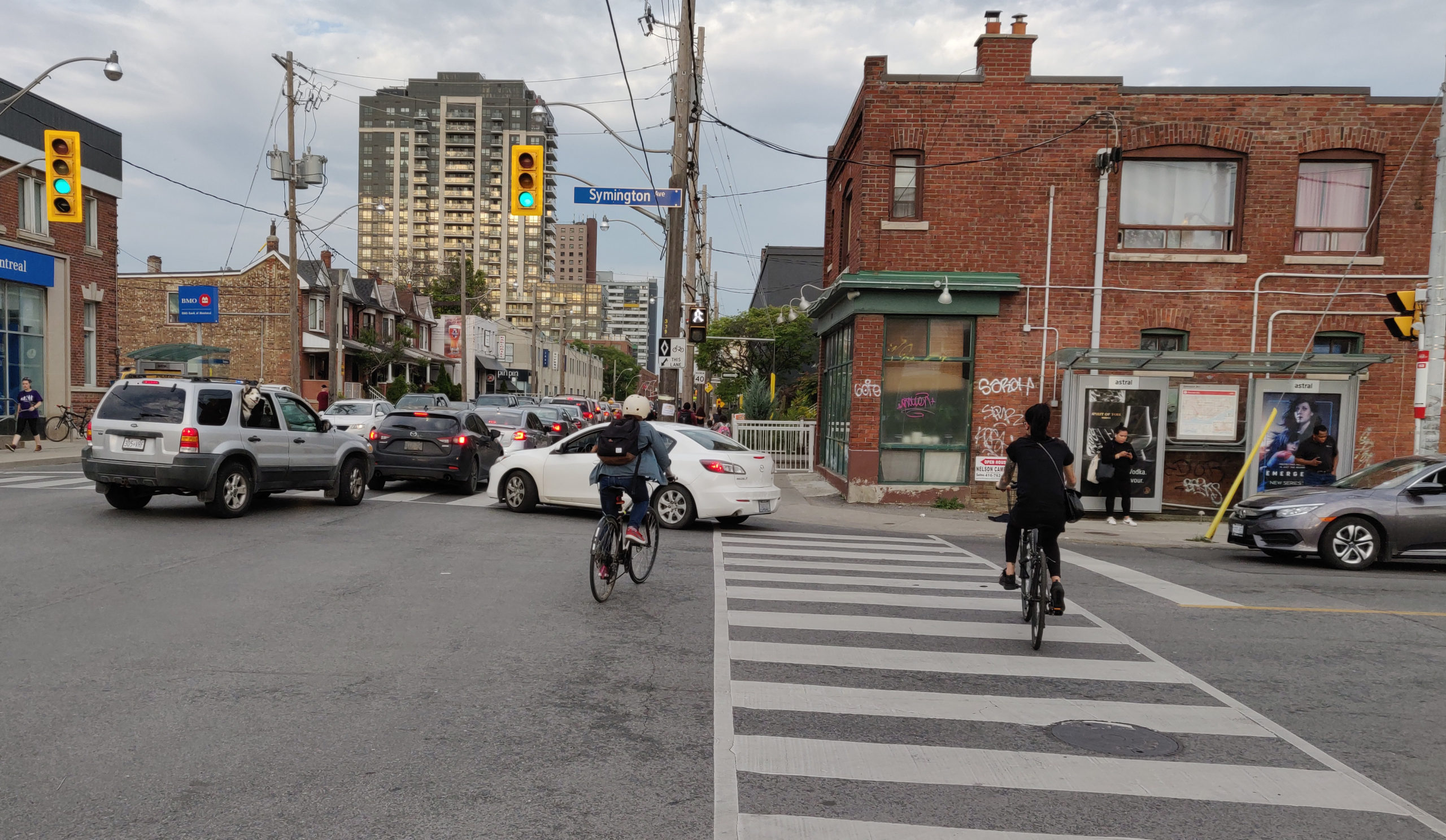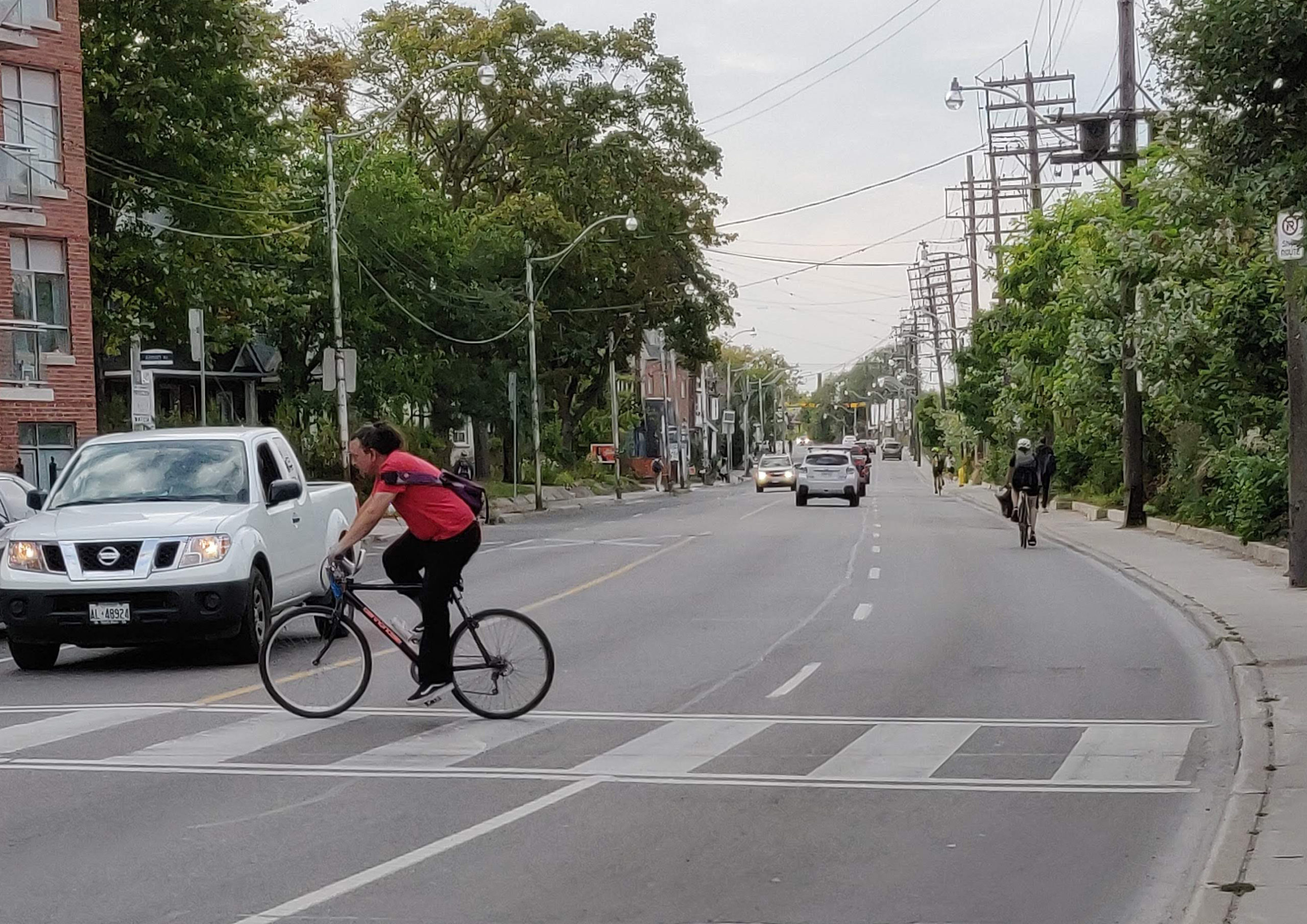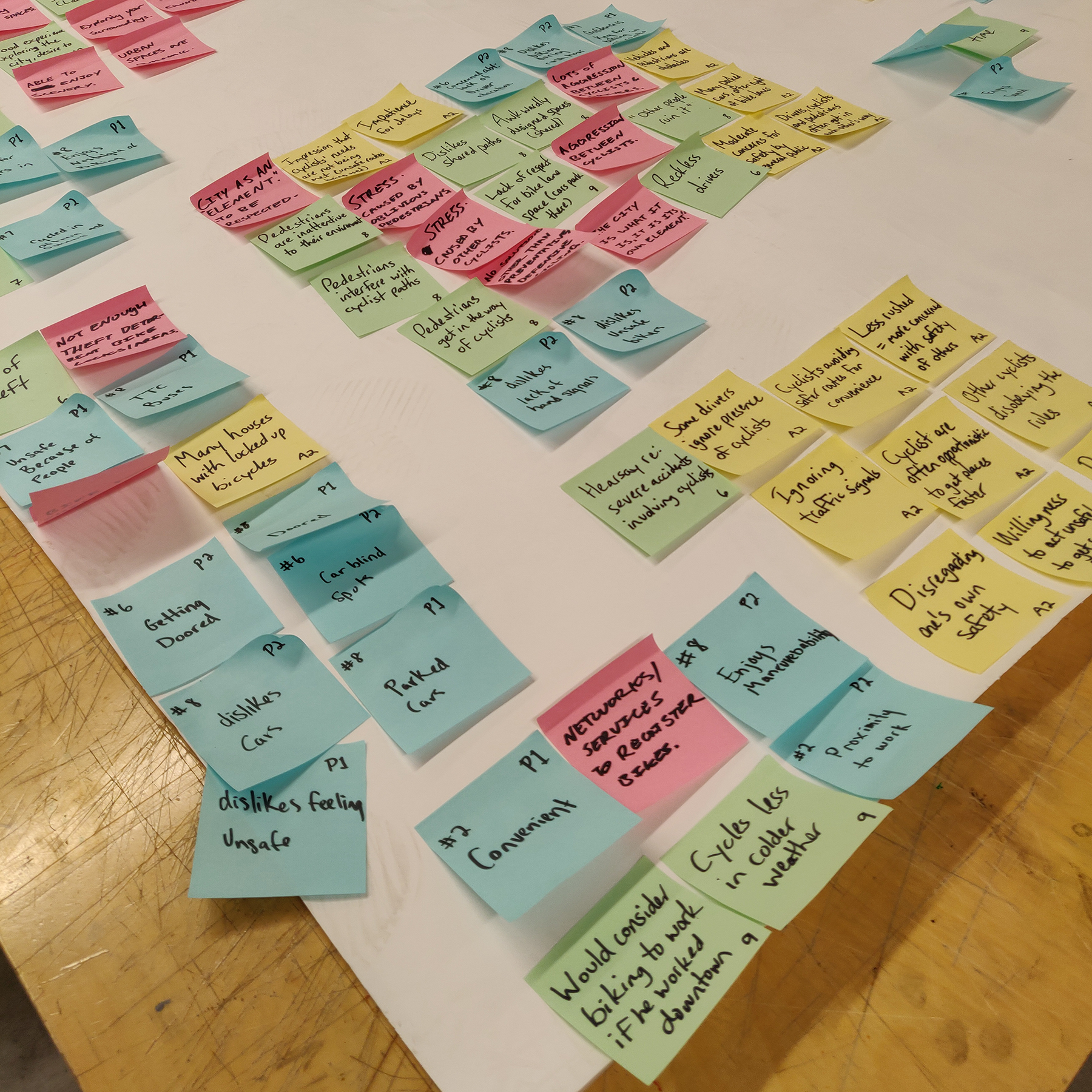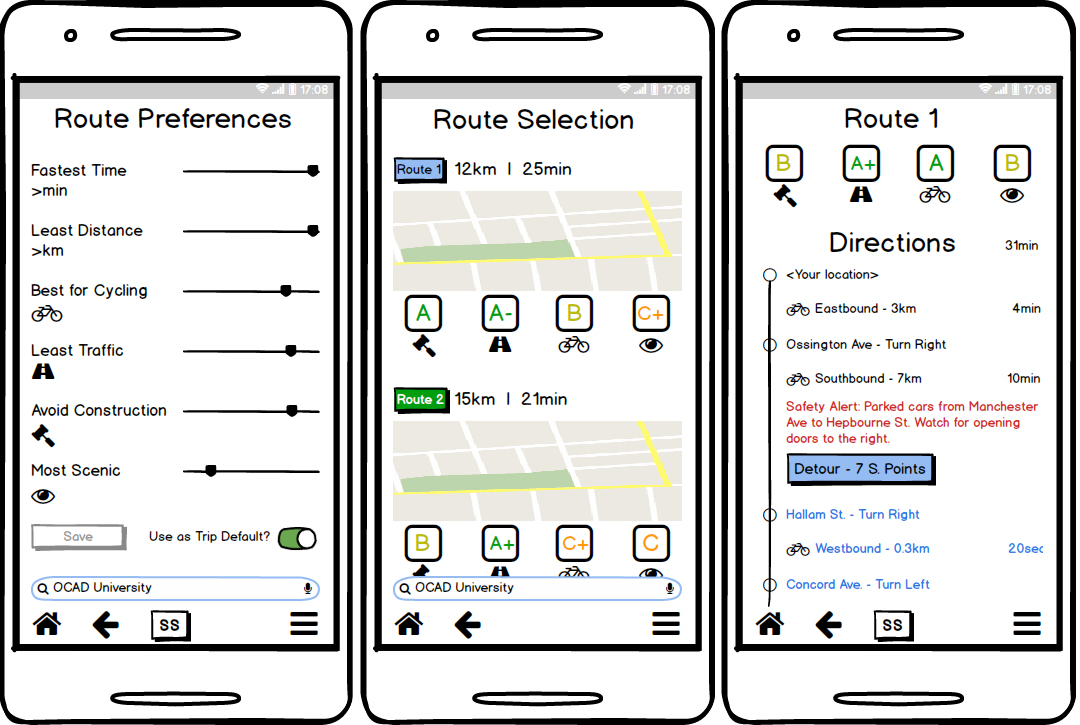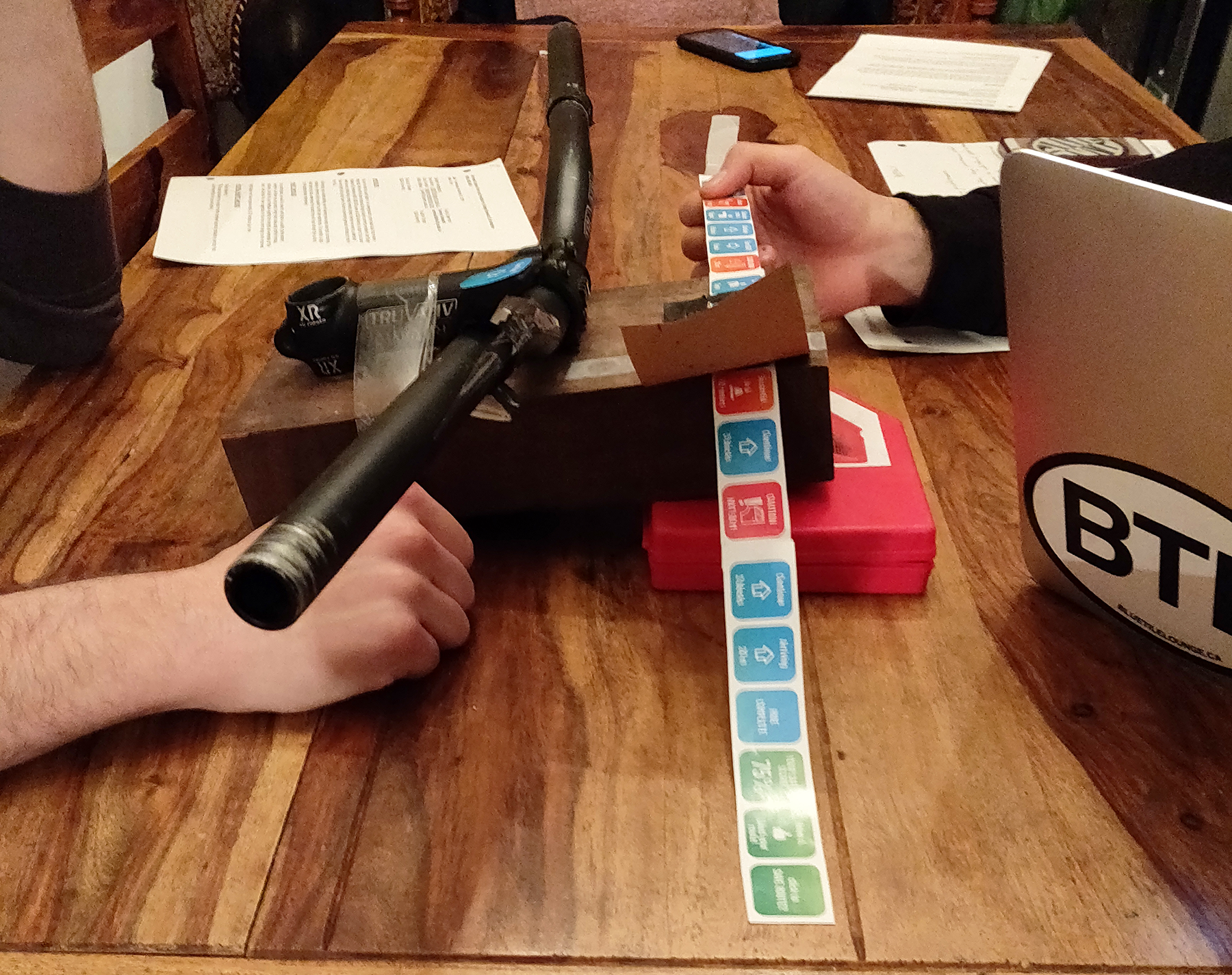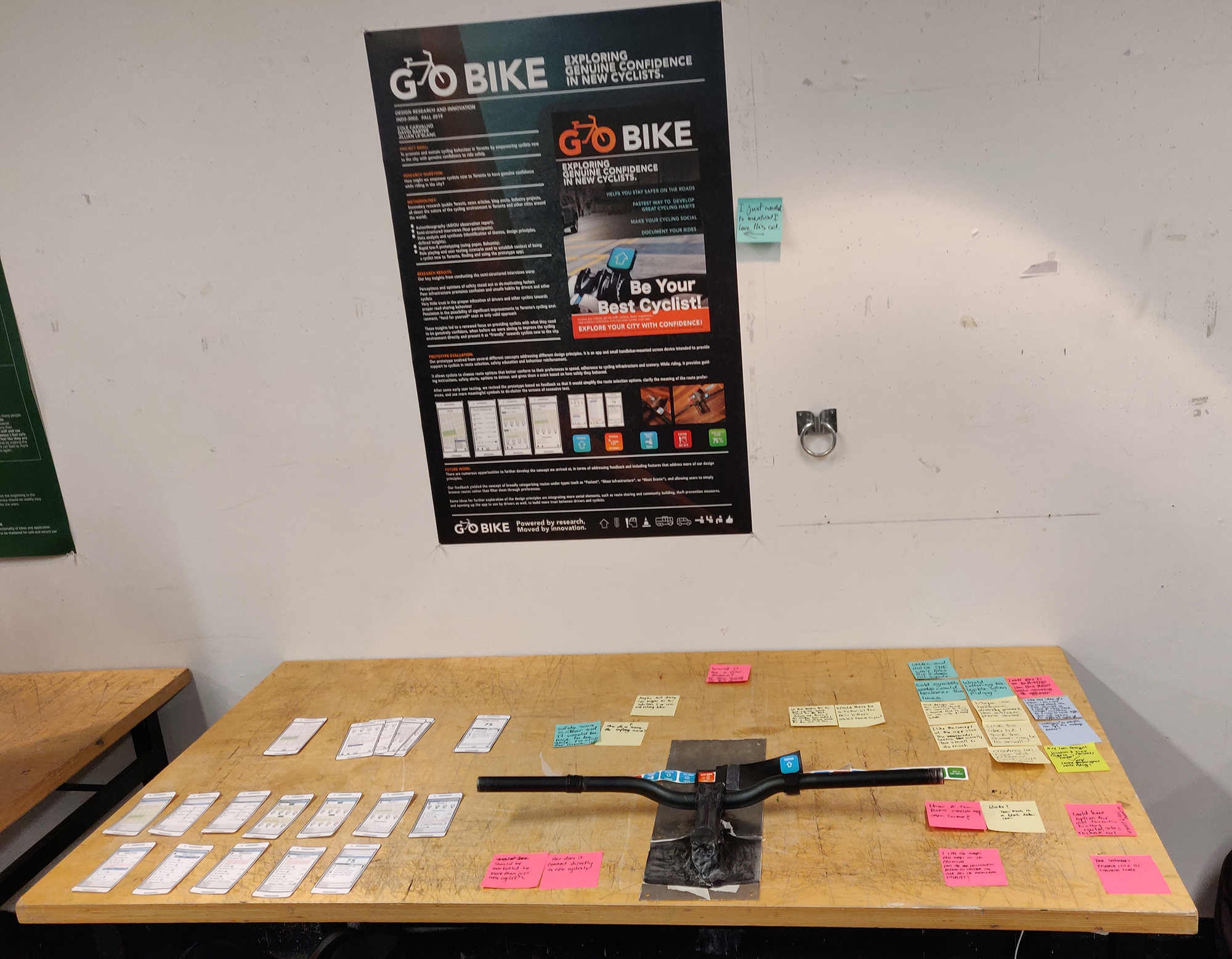GOBikeT/O
Design Process
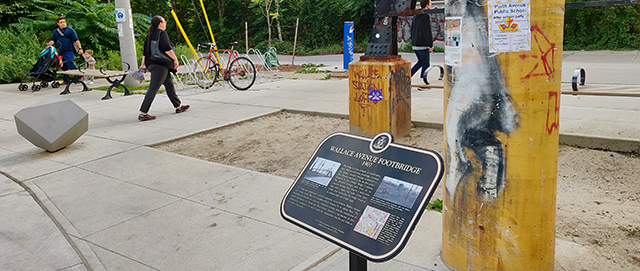
To establish a problem space, my teammates and I opted to draw on personal experience: all three of us were cyclists to some degree. In particular, I am an avid cyclist, and was experiencing Toronto’s cycling infrastructure for the first time, coming from a city I perceived as much more “cycling-friendly” (Vancouver). The idea of how to make a city more “cycling-friendly” was appealing to us.
Part of our problem defining phase involved conducting secondary research, which led me to finding numerous sources (statistics, academic studies, anecdotes) supporting my perception of how dangerous Toronto is for cyclists, and comparisons to the environment of other cities.
At this point, we moved forward with a “How Might We?” statement that persisted in including ambiguous terms such as “cycling-friendly” and “intimidating” in its attempts to define what problem we are trying to solve and why. I wrote an autoethnography report to include my own observations of Toronto’s problems with cycling, using the AEIOU (activities, environments, interactions, objects, users) observational framework.
We chose to target only “new” cyclists (those new to cycling and/or to Toronto), to avoid absorbing biases from cyclists who have adjusted their behaviour to Toronto’s specific challenges. Our interview guide aimed to gain insight into the experiences of people who had not adjusted, to find out how the city does or does not support their behaviour. The resulting interviews generated deep and passionate conversations on the topic, and revealed meaningful themes within the collected data.
The turning point of this project was realizing the need for “genuine” confidence. Several interviewees felt there is a lack of education and understanding of the city’s environment by other new cyclists. This led to an app prototype focused on forewarning users of what to expect and how they can handle cycling in Toronto safely, rather than attempting to “fix” the city in some way.
In addition to the app prototype, we built a handlebar-mounted smart watch-sized screen device meant to provide information to the user while cycling, absent the need to keep a hold on a phone. We tested both in iterations, refining after some initial observations in how the app might work more effectively. The final version was very successful, showing how cyclists could have helpful information at hand, and how to react to their, and others’, advantage.
The final presentation was a “gallery walk” between booths, ours including a poster and a display of our prototypes. We reacted to several rounds of feedback and shared insights with the class.
Results
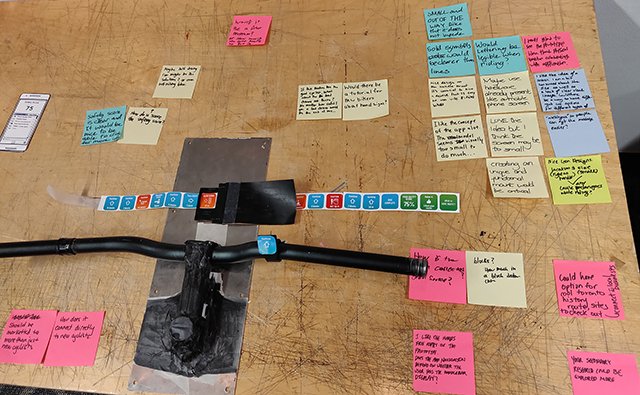
- OCAD University: Bachelor of Design (Industrial Design)
- September-December 2019
